The foundation of good SEO starts with good keyword research. If you don’t know what people are searching for, it’s hard to create and optimize content for it.
Conducting keyword research is like conducting market research. You are trying to estimate demand by understanding how many people are searching for something.
Thanks to Google, we can get precise information about potential keywords and the potential traffic they can generate for our website. Without this data, we would be shooting in the dark and measuring results with a broken pencil.
For SEO, the Google Keyword Planner is the go-to tool for keyword research. It’s a tool designed to be used both by advertisers and SEO people.
Google Keyword Planner works by asking for information about your business and the relevant keywords that you are targeting. Based on this information, it generates more keyword ideas for you to consider.
Even if you give the Keyword Planner just a few keywords, it can generate hundreds of new keyword ideas for you.
However, without the precise knowledge of how to extract great keywords from Google Keyword Planner, your efforts will take you nowhere. You might end up with unprofitable keywords or the same keywords that all your competition has.
To have a competitive advantage with keyword research, you need to know precisely what to do inside Google Keyword Planner. That is what we will teach you today. We will give you a step by step guide through which you can find the golden keywords that most people miss.
Signing Up For Google Keyword Planner
Google Keyword Planner is a part of Google AdWords. You’ll need to have a Google Adwords account to access Google Keyword Planner. If you don’t have one, you can create a new one in a few minutes. Here is the link to Sign Up and Login.
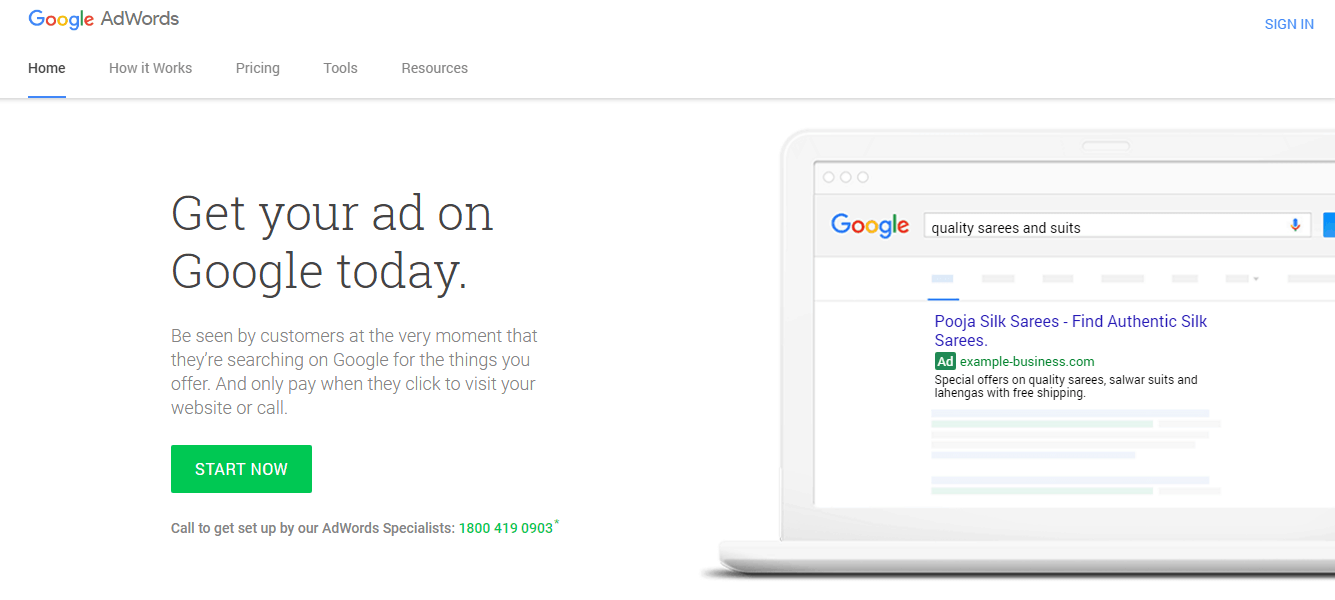

Once you create an account and are logged in, navigate to Google Keyword Planner from the tools section.


Google Keyword Planner gives you three tools for keyword research.
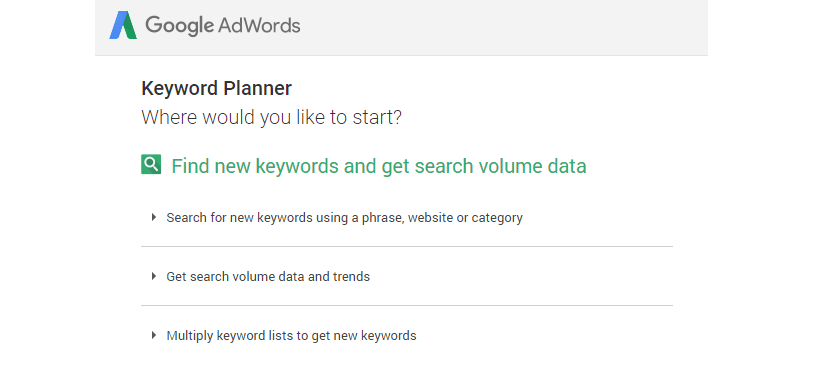

- Search for new keywords using a phrase, website or category: This tool helps you discover new keywords based on seed keywords. We will use this as a starting base to discover keywords.
- Get search volume data and trends: This tool gives us information about the search volume and the search trends of the different keywords.
- Multiply keyword lists to get new keywords: This tool helps you create permutations and variations of your keywords by combining them in different ways.
The Secret Sauce Of Using Google Keyword Planner
Google Keyword Planner is a keyword research tool. It gives you output based on the input it receives.
A limitation of a tool like this is that the output is completely dependent on the input. The better the input is, the better the output will be.
In Google Keyword Planner’s case, the input is the seed keywords.
Since Google can’t predict what your website is about, it needs some information to generate keyword ideas. In Google Keyword Planner’s case, you can enter several broad keywords that will act as the basis of your keyword research. These keywords are called seed keywords,
Most people would not pay too much attention to the seed keywords, thinking Google can fill in the gaps. But Google isn’t perfect.
By spending some time to come up with unique seed keywords, you will have the secret sauce that makes Google Keyword Planner generate excellent keywords for your website.
How To Generate Excellent Seed Keywords
There is no defined process to generate seed keywords. It requires brainstorming, creativity, and a little luck. For starters, here are some ideas that you can use to generate seed keywords.
-
- Brainstorming to come up with ideas: You might already have a few keywords in your mind to use with Google Keyword Planner. For example, if you wanted to rank for “basketball shoes”, your ideal keywords might be “basketball”, “basketball shoes”, “basketball sneakers”, and so on. If you put any of those keywords in Google Keyword Planner, you will see very competitive keywords. Obviously, anyone else trying to rank for the same keywords will have access to the same keywords as well. But, if you take a few minutes to think about keywords related to basketball, you can come up with some excellent seed keywords yourself. Some keywords that closely relate to “basketball” are:
- Hoops
- Jordans
- Michael Jordan (or any other basketball player)
- Basketball rules
- Basketball court
- Dunks
- Layups
- Brainstorming to come up with ideas: You might already have a few keywords in your mind to use with Google Keyword Planner. For example, if you wanted to rank for “basketball shoes”, your ideal keywords might be “basketball”, “basketball shoes”, “basketball sneakers”, and so on. If you put any of those keywords in Google Keyword Planner, you will see very competitive keywords. Obviously, anyone else trying to rank for the same keywords will have access to the same keywords as well. But, if you take a few minutes to think about keywords related to basketball, you can come up with some excellent seed keywords yourself. Some keywords that closely relate to “basketball” are:
And many more. All these keywords are closely related to basketball, and using these as seed keywords will give you a wider range of keywords in Google Keyword Planner.
- Forums: Forums are an excellent place to find seed keywords. There are probably hundreds of forums in your industry. These forums are full of people who talk about the subjects/keywords you would want to rank for. They use words that you might have known about the topics yourself but did not remember on your first try. By visiting those forums and reading a few threads, you can get access to those keywords. Continuing with the earlier example of the “basketball” keyword, if we search Google with “basketball forums”, we will find a lot of forums that are ideal for our research.

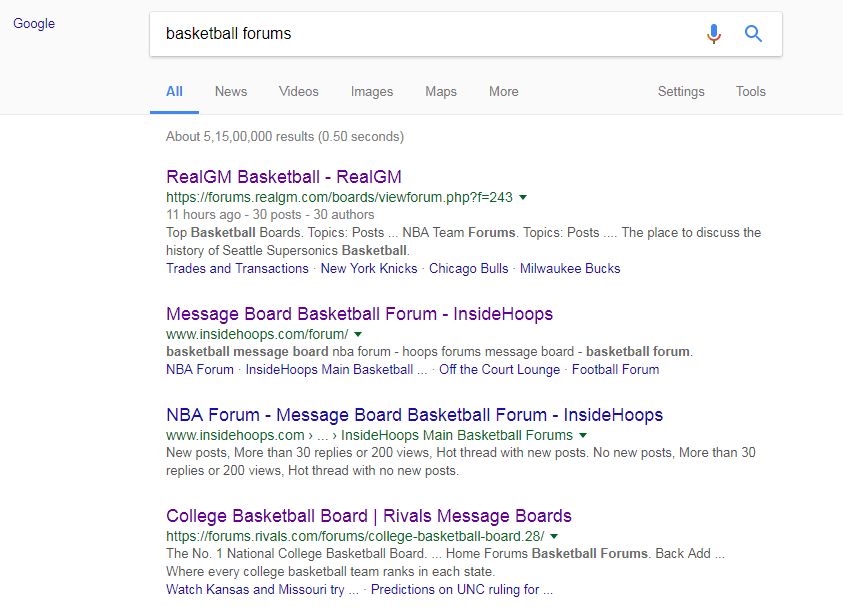
- By visiting a few of these forums and observing the words being used, we can come up with new seed keywords. Below is an image from a basketball forum. Observe all the keywords that don’t immediately come to mind when you think about basketball. These are the kind of words that make great seed keywords.

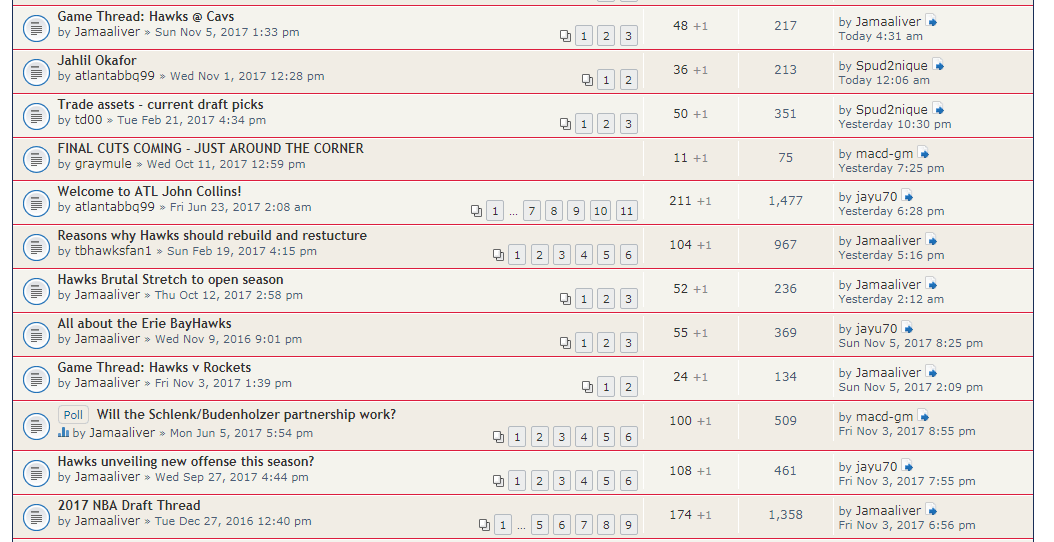
- Q&A Sites: Q&A sites is another great option for finding specific topics and keywords your customers use. Most Q&A sites allow searching for specific keywords or viewing questions on a specific topic. Both these methods will give you access to new seed keywords. There are plenty of Q&A sites around that you can visit to look for keywords. Two popular ones are Quora and Yahoo Answers. If you don’t want to scout Q&A sites manually, you can use a tool like Answer The Public to find relevant questions regarding a topic. For example, searching the term “basketball” showed the following results.

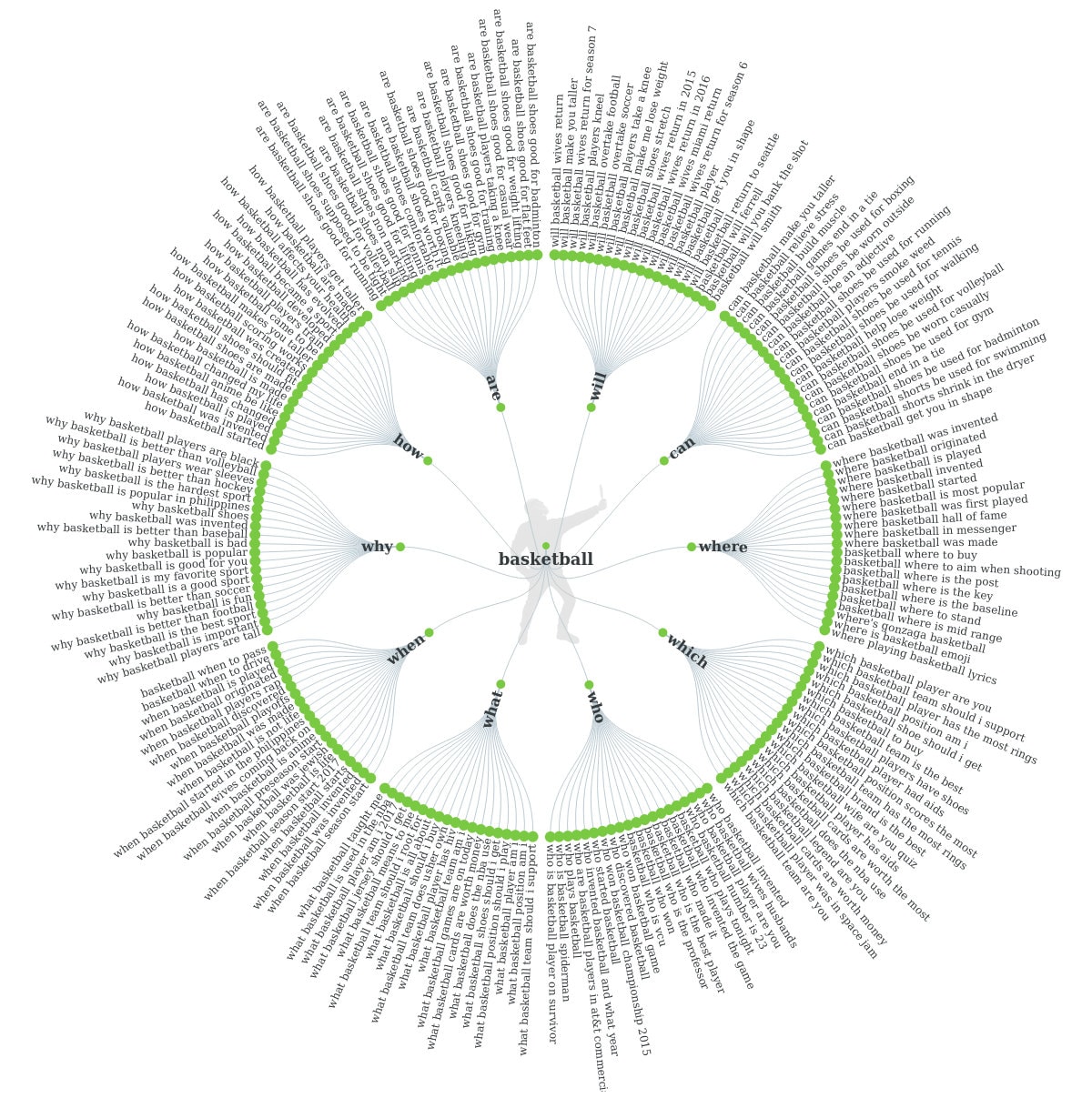
Using Google Keyword Planner
If you used the methods mentioned above, you should have a bigger list of seed keywords than what you began with. Now we will use Google Keyword Planner to do the actual keyword research.
Remember, Google Keyword Planner showed us three different options to start our keyword research. Out of the three, we will start with the first tool.
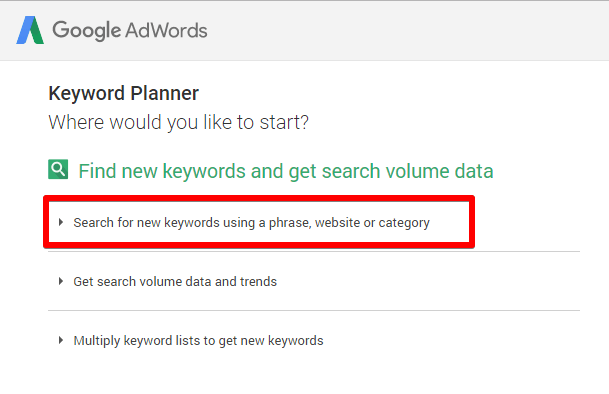

When you select the first option, you will see a menu with the following options.
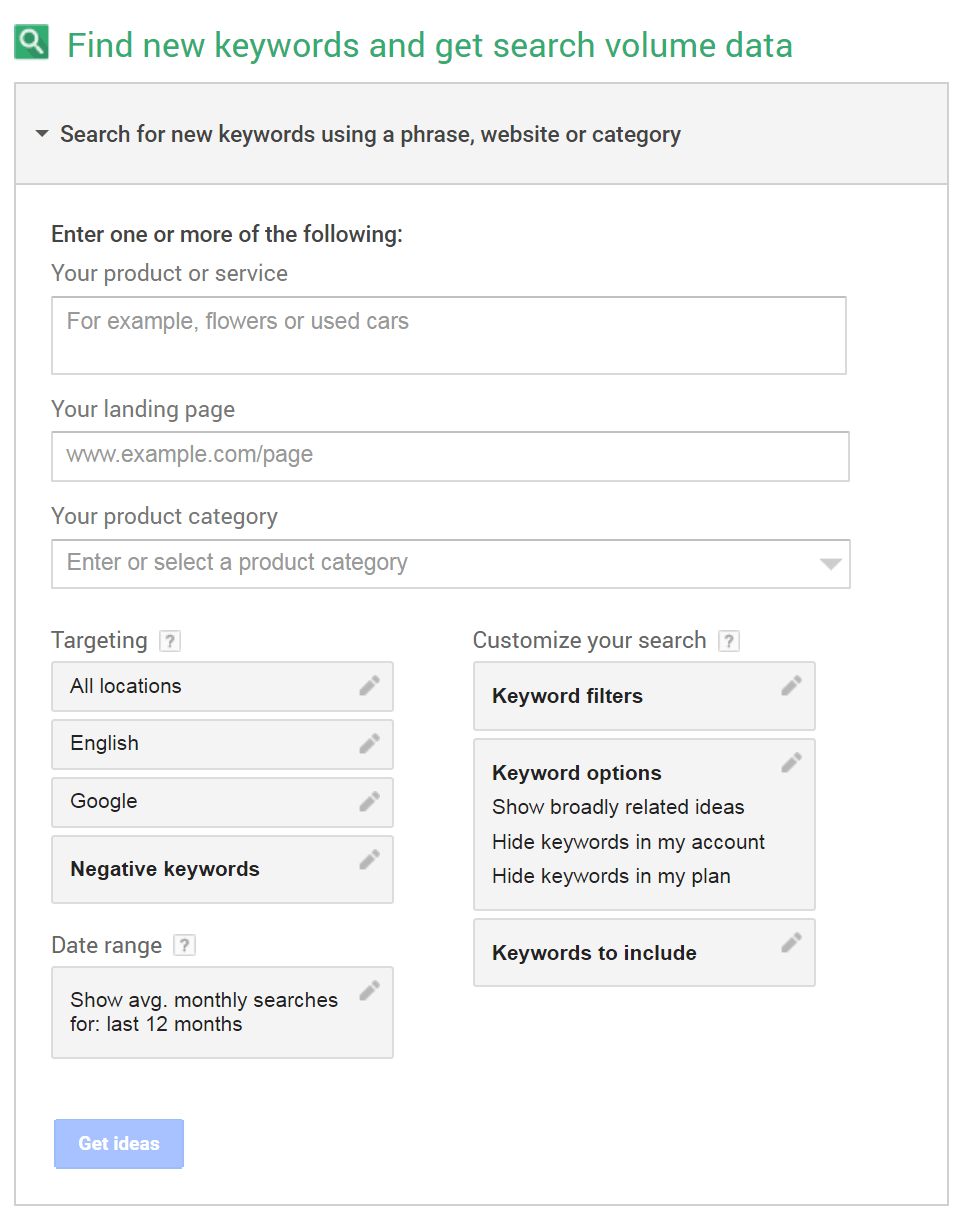

Let’s understand each of the sections in detail.
Enter one or more of the following
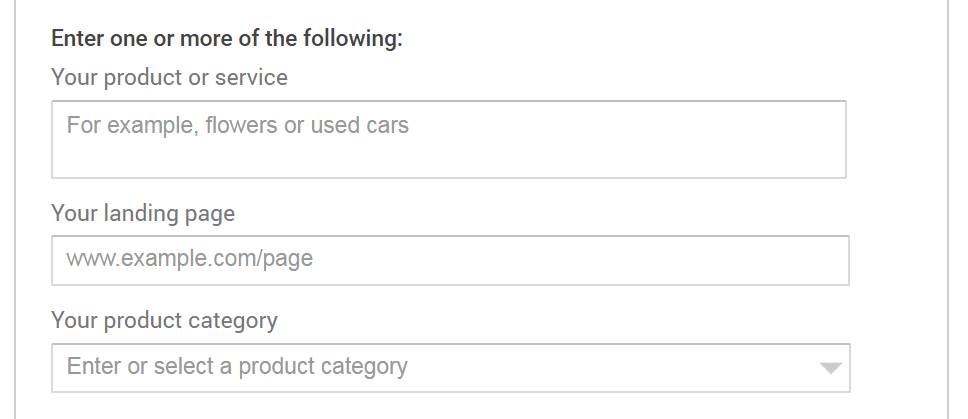

Most of the results you get from Google Keyword Planner will depend on what you enter in these three fields.
Your product or service: Here you enter your seed keywords that we came up with in the above steps. You can enter all your seed keywords together, however, if you have a large list, you should break it down into smaller chunks.
Depending on how competitive your keywords are, you might want to enter shorter or longer keywords. Short keywords would mean just 1-2 terms and long keywords mean 3 or more terms.
For example, “basketball shoes” is a short keyword while “best high top basketball shoe” is a long keyword. You should have a mix of both types of keywords for an ideal SEO strategy.
Your Landing Page: This is meant for AdWord users. Advertisers can enter their landing page URL here, and Google will analyze the page. Based on the analysis, Google Keyword Planner will suggest more keywords to target.
To use this to your advantage, put in the URL of a competitor’s page and you might get some keywords that you otherwise would have missed.
Your product category: This field is not used often. If you do use it, Google will try to optimize your query for the industry you selected, which may give you more keyword ideas. We suggest that you leave this blank and use it only if are not satisfied with the results without it.
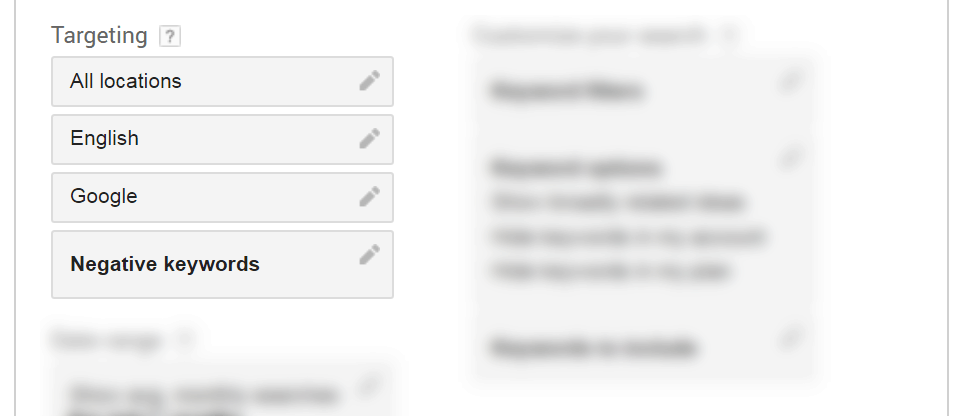

Here you set the country you are targeting and the language your keywords are in. For example, if you were targeting Mexico, you would choose Mexico in the country field and Spanish in the language field.
In the negative keywords list, you enter the keywords you want to avoid. In our basketball example, if you are selling basketball accessories, but not basketball lessons, you would put the keyword “lessons” in the negative keyword list.
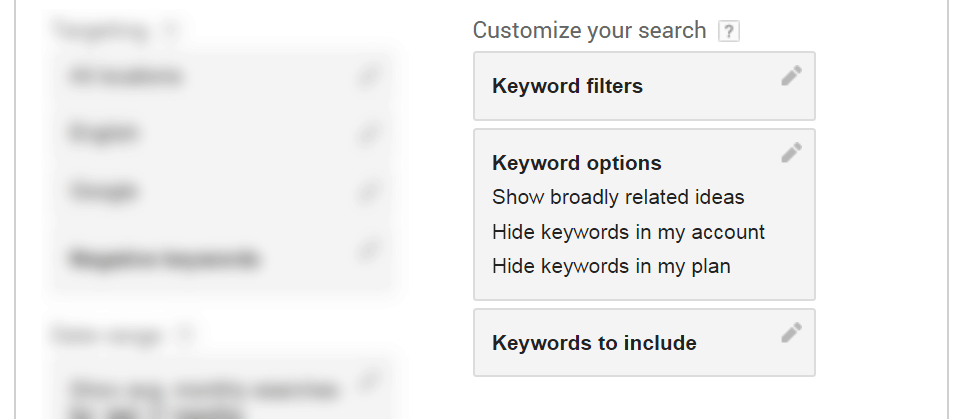

Keyword Filters: Inside this section, you can set filters for minimum volume and minimum bids on your keywords. Based on the limits you set, Google will skip keywords that don’t fit the criteria. A higher bid means a more valuable keyword, so use this filter to balance keyword volume and keyword value.
The other options in this section are meant only for advertisers, and we will ignore them for now.
Keyword Options: This option determines how broadly or how narrowly Google searches for keywords. Since we are looking for ideas, we would keep it at broad targeting (“Show broadly related ideas).
Again, the other options are for advertisers only, and we will skip them.
Keywords to include: This is opposite to the exclusion list we saw earlier. If you add a keyword here, then Google Keyword Planner will find only those keywords which contain that keyword.
To explain further, if you had an online store selling basketball shoes, you could enter the keyword “shoes” here. If you do, all the keywords that Google Keyword Planner produces will have the keyword shoes in it.
Once you have filled in the required fields, hit the “Generate Ideas” button. You will be taken to the “Keyword Results Page”.
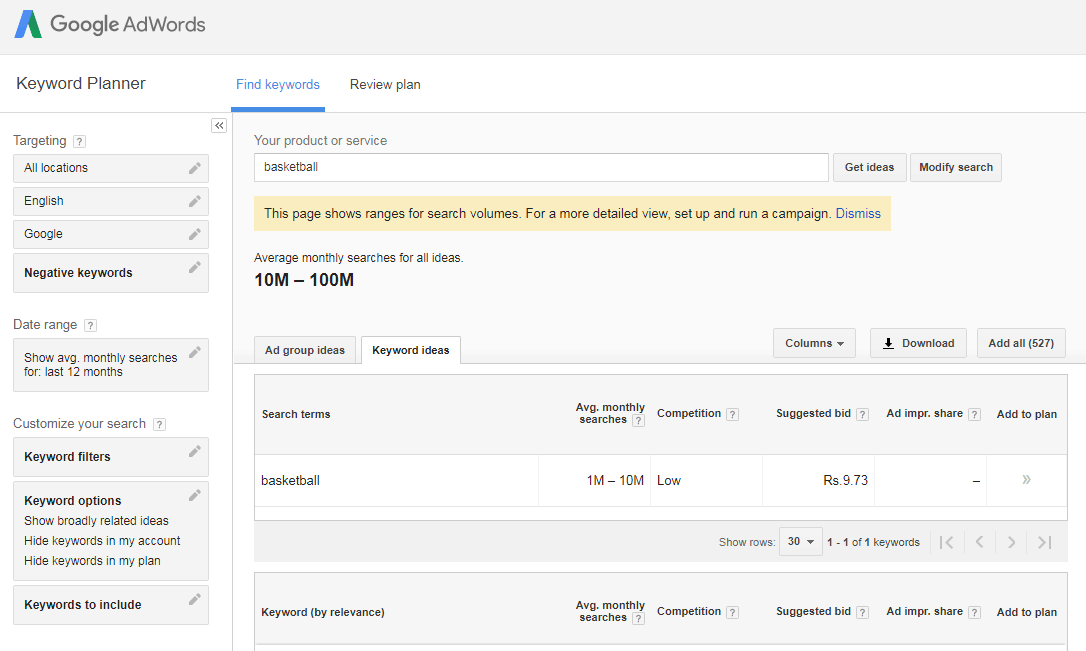

Let’s understand the information on the page.
In the left sidebar, you will see the same targeting and filtering options that you saw earlier. You can change these options right here to refresh the keyword results.
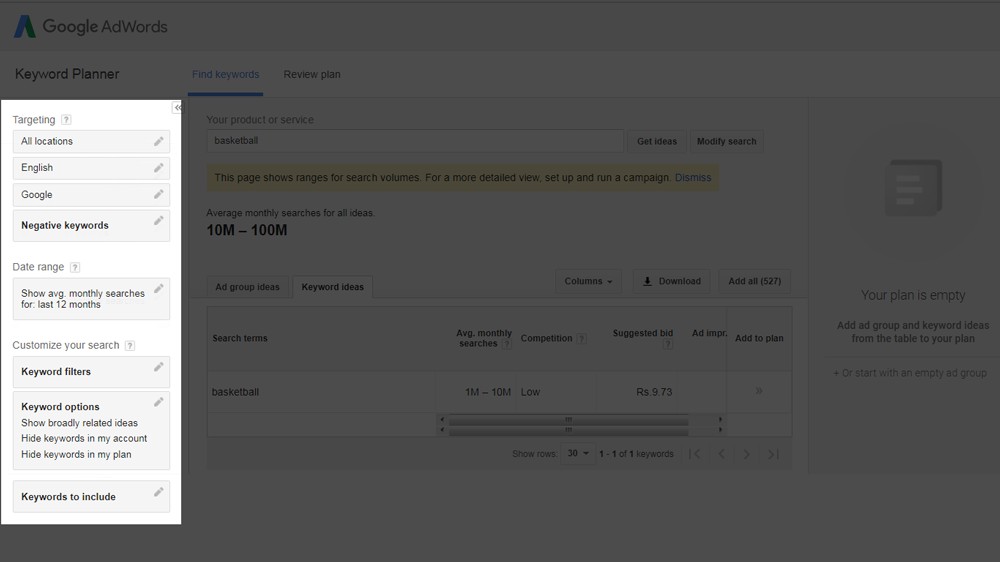

In the middle section, you will see the keyword list that Google Keyword Planner has generated. But, first you should note that the keywords are split into two tabs:
- Ad Group Ideas
- Keyword Ideas
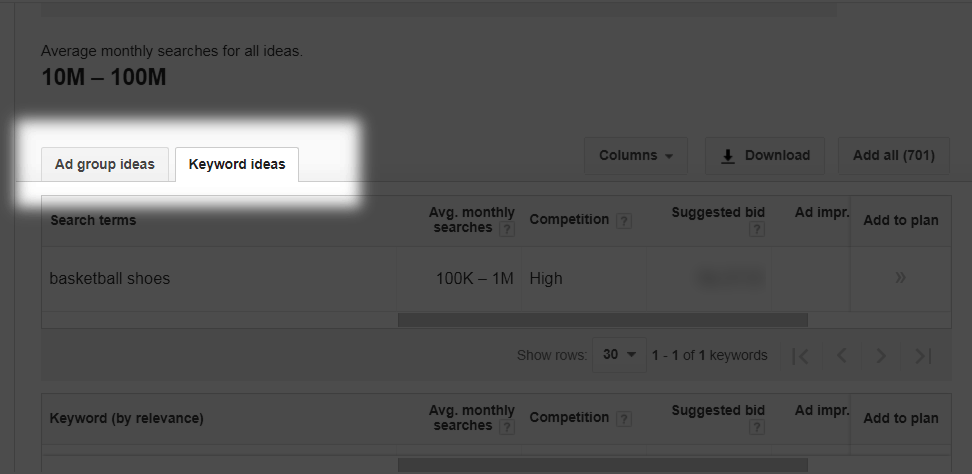

It’s easy to ignore the Ad Group Ideas section as the Keyword Ideas section is selected by default. But that would be a mistake. We will explain how to extract great keywords from both tabs.
We usually start with the Ad Group Ideas Tab. For the keyword “basketball shoes”, here is what we got.
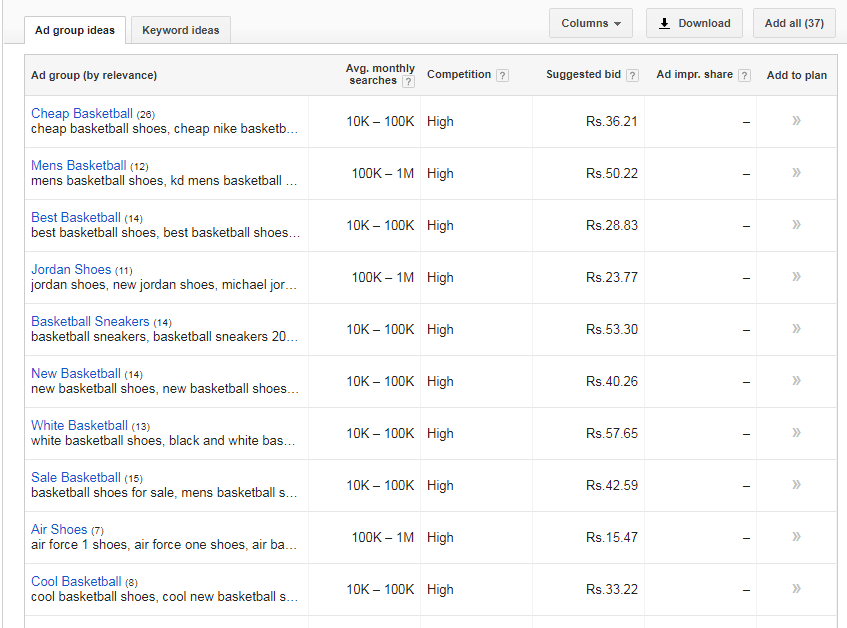

The Ad Group Ideas tab is a great place to find more seed keywords which you can put in Google Keyword Planner again. You can also look at the ad group names as potential keyword ideas.
If you see a good keyword in an ad group name, it’s often a good idea to click on the ad group to reveal the keywords inside. Most of the time, the keywords inside will be useful as well.
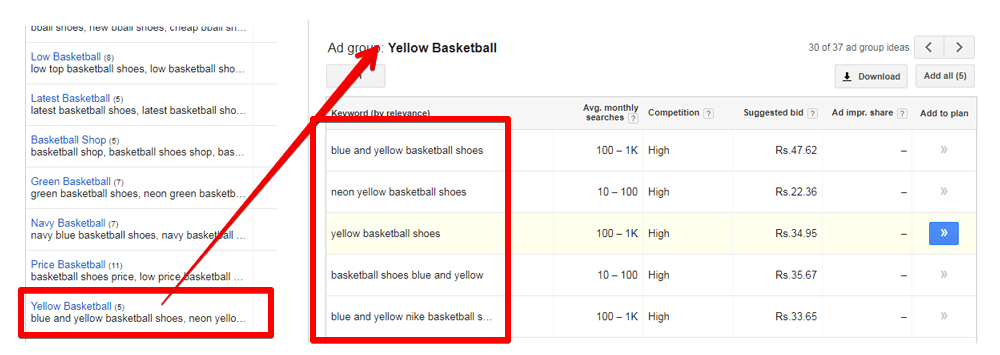

Make sure to note down all relevant keywords in a spreadsheet or text editor of your choice.
Now we will look at the Keyword Ideas tab to look for more keywords.


Once you switch to the keyword ideas tab, you are taken to this screen. There are five terms in this area that you should understand.
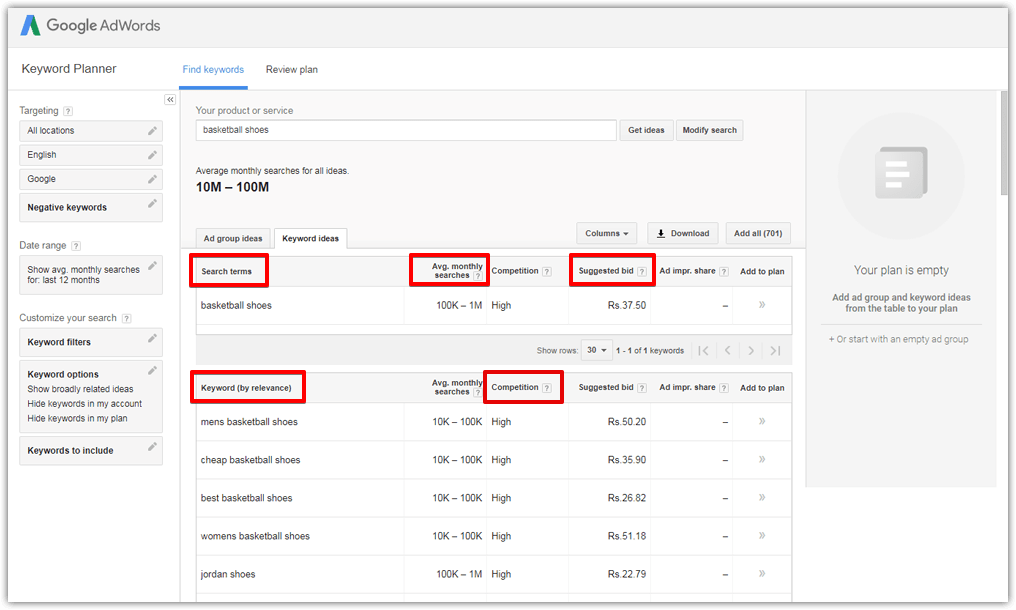

- Search Terms: These are the same terms you entered in the steps above.
- Avg. Monthly Searches: This shows a range of average searches for the respective keyword per month. Earlier, Google used to share exact volumes for these keywords, but it was changed for some reason. Now, the exact search volume is only available to advertisers. A workaround for this is to run an AdWords campaign yourself. Even a $5 campaign for a very low volume keyword will give you exact search data for your keywords.
- Competition: This represents how much advertiser competition there is for the selected keyword. Note that this does not represent how easy or difficult it will be to rank for this keyword in the organic results.
- Suggested Bid: This is what Google suggests advertisers bid for one click. From an SEO perspective, this tab can show you the commercial value of a keyword. Keywords with high search volume and a good suggested bid are very valuable.
- Keyword [by relevance]: This column shows the various keywords Google Keyword Planner has generated. By default, the keywords are sorted by relevance in descending order. This means keywords that Google thinks are the most valuable are shown on the top.
Now that you understand these terms, let’s look at the suggested keyword ideas.
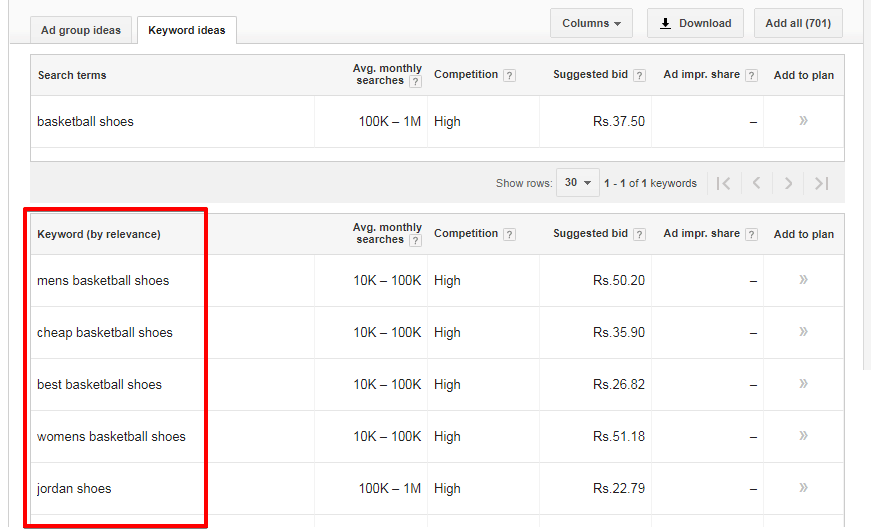

Based on the seed keywords, Google Keyword Planner will generate hundreds of keywords for you. But out of all these keywords, how do you determine which are the best keywords to aim for?
The answer to that question is more art than science, but we have a decent process that you can replicate to find the most valuable keywords.
First, download a CSV of all the suggested keywords.
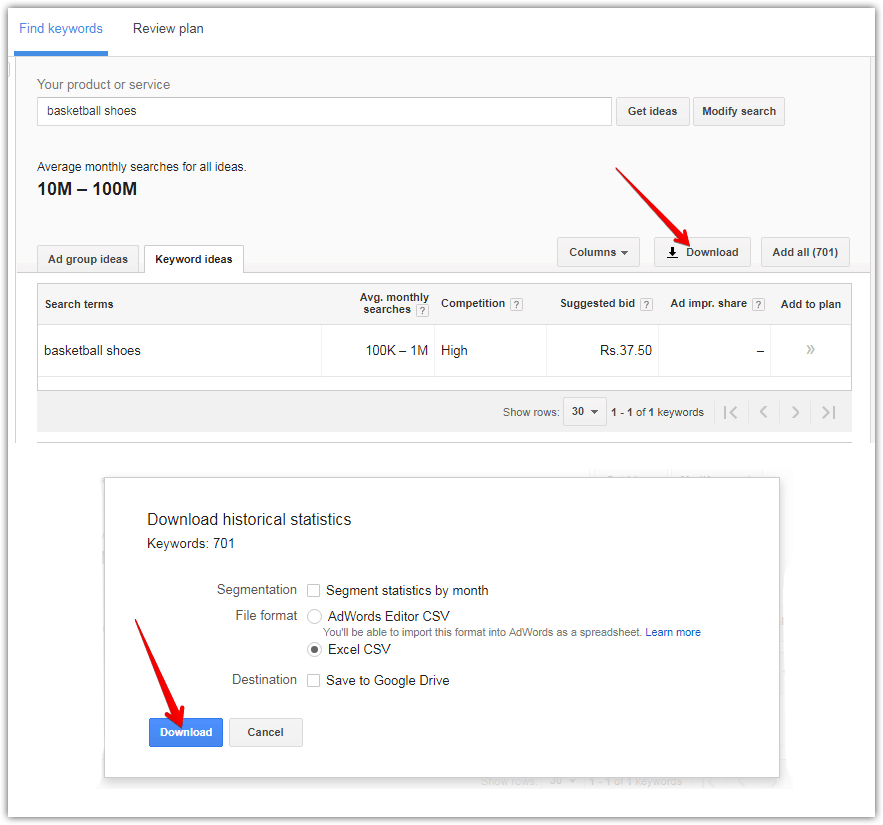

Open the keyword list in the spreadsheet editor of your choice and remove the excess columns. We prefer Google Sheets. For this example, we imported only a few rows.















![Utilizing Robotic Process Automation Solutions For Business Success 34 Businesses are always looking for new ways to work better, faster, and grow. One cool way they're doing this is with Robotic Process Automation (RPA). It's like having robots do the boring stuff so people can focus on more important work. This helps companies be more efficient, come up with new ideas, and grow even bigger. This article discusses the transformative capabilities of robotic process automation solutions and explores how such solutions enable businesses to achieve unprecedented levels of efficiency, agility, and scalability in their operations. Using Robotic Process Solutions for Business Success In the dynamic landscape of modern business, agility and adaptability are paramount. Companies that can swiftly respond to market changes, customer demands, and emerging trends are positioned for long-term success. However, achieving such agility requires more than just a willingness to innovate—it demands a strategic approach to optimizing operations and maximizing efficiency. Robotic Process Automation software plays a crucial role in such situations. By leveraging advanced software robotics to automate mundane, rules-based tasks, it empowers organizations to streamline workflows, enhance productivity, and drive growth like never before. From routine data entry and processing to complex decision-making processes, RPA solutions are revolutionizing the way businesses operate across industries. How Does Robotic Process Automation Work? At its core, RPA works by mimicking human actions within digital systems and applications. Using a combination of machine learning algorithms, natural language processing, and computer vision technologies, RPA software robots can replicate virtually any repetitive task that a human employee would perform manually. This includes logging into systems, reading and writing data, manipulating spreadsheets, and even interacting with customers via chatbots. [embedyt] https://www.youtube.com/watch?v=lNeCTzNRtUs[/embedyt] Features of Robotic Process Automation The versatility and adaptability of RPA solutions are among their most notable features. Unlike traditional IT automation tools, which are often limited in scope and functionality, RPA platforms can interact with various systems and applications, including Features of Robotic Process Automation (RPA) include: Regulatory Compliance Fast ROI User Interface (UI) Automation Drag-and-Drop Workflow Designer Screen Scraping Data Handling Learning Capability Debugging Seamless Integration Rich Analytical Suite Simple Bot Creation Interface Hosting and Deployment Options Multi-Tasking Software Console Role-based Security User-friendly Interface to Create Bots Seamless Scalability Benefits of Robotic Process Automation The benefits of RPA implementation are manifold and far-reaching. By automating repetitive tasks and processes, RPA enables organizations to accelerate their operations, reduce errors, and cut costs. Moreover, by freeing up employees from mundane tasks, RPA empowers them to focus on higher-value activities that drive innovation and strategic growth. 1. Speeding Up Processes with RPA Solutions A major advantage of RPA is its ability to speed up processes by automating time-consuming tasks that would otherwise require human intervention. Whether it's processing invoices, generating reports, or managing inventory, RPA solutions can perform these tasks with unmatched efficiency and accuracy, significantly reducing processing times and improving overall productivity. 2. Reducing Human Errors through RPA Implementation Human errors are costly and affect business performance. By automating routine tasks and processes, RPA helps minimize the risk of errors and inaccuracies, ensuring consistency and reliability in day-to-day operations. Whether it's in customer management, financial reporting, or regulatory compliance, these solutions provide a level of precision and accuracy that is unparalleled. 3. Enhancing Workflow Scalability with RPA Technology As businesses grow, so too do their operational needs. RPA technology offers unparalleled scalability, allowing organizations to adapt and expand their automation capabilities as needed. Whether it's scaling up to handle increased transaction volumes or integrating new systems and applications, they provide the flexibility and agility required to support business growth and innovation. 4. Improving Employee Productivity with RPA Solutions Automation of repetitive tasks through Robotic Process Automation software liberates employees to concentrate on activities that add value. This dual benefit not only boosts employee satisfaction and engagement but also elevates overall productivity and performance. With RPA efficiently managing routine tasks, employees can channel their efforts towards endeavors demanding creativity, critical thinking, and human judgment—fundamental elements for thriving in today's knowledge economy and driving business success. 5. Ensuring Accuracy and Governance with RPA In a climate marked by heightened regulatory scrutiny and evolving compliance mandates, precision and governance are paramount for businesses. RPA solutions deliver an unparalleled level of accuracy and control that surpasses manual processes, guaranteeing adherence to regulatory standards and internal policies. RPA also furnishes organizations with robust audit trails and reporting functionalities, empowering them to showcase accountability and transparency across their operations. Conclusion Robotic Process Automation in Business](https://www.biztechage.net/wp-content/uploads/2024/04/Robotic-Process-Automation-in-Business-1-120x86.jpeg)









